Effective Approach for Raising the Efficiency of Happiness
Effective Approach for Raising the Efficiency of Happiness among Students during Classroom
Abstract
Happiness is an important factor in our life including in learning and teaching. This work is concentrated on the classroom evaluation before and after applying this approach. There is big problem in class room that students after a short time of the beginning of the lecture, they turn off their mind and stay absolutely outside of the class. Our aim is to re-excite the classroom environment to be always inattention to the class. So this approach aims to jump from any of emotional face expression to happiness expression. This approach depends on image processing part that based on face tracking of students and evaluate the happiness via interactive model situated in the classroom. This model constructed from Raspberry Pi, camera and screen, then via the implemented algorithm you can track and make rising to happiness as possible. Rising happiness is an important factor for students to be more attractive to the lecture then to be in good condition to understand the lecture. This approach gives a good results for student cooperation via the interactive model. In addition this approach gives a good performance in mixing of hardware and software so it has the ability to real time working.
Keywords: Happiness, Happiness scale, Satisfaction, Classroom Environment, Teaching Improvement.
Introduction
Psychological research and philosophical happiness began in China, India and Greece for almost 2,500 years with Buddha, Socrates, Confucius and Aristotle. We can find important and wonderful similarities between the ideas of these thinkers and the modern science of happiness. Many opinions explored the ideas of great thinkers, including East and West, who have devoted much of their lives to the pursuit of happiness [1],[2].
Recently there are spectacular increase in scientific studies on positive psychology and the science of what makes happy people happy that is science of happiness. Fortunately, many of these studies highlight thought and action specific patterns that can have a significant impact on our sense of happiness. The discoveries that result enrich the consulting practices of clinical psychology, psychiatry and life coaching [3],[4],[5].
There are many factors that make people feel happy, including financial matters, works, social and cultural matters, social media in addition we can add the technological factor that will be double-edged sword, and in any case can be summed up these things in which humans seem happiest when they have (figure 1) [6],[7],[8],[9]:
- Pleasure or fun.
- Engagement or commitment.
- Social Relationships.
- Meaning or sense.
- Accomplishments or achievements.
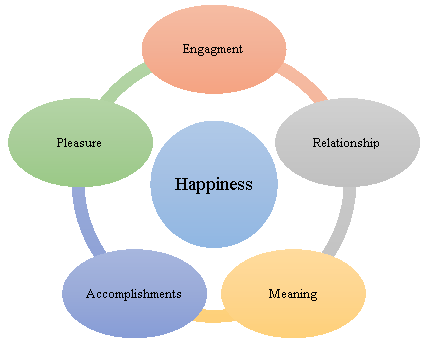
Fig. 1 factors that make people feel happy
Related Work
Many works are published concerning the happiness, some of these works are concentrated on education and other works are concentrated on other fields such as business, health …etc. This section explains some of these works that may are useful for the implemented approach, below listed some of these works:
Peter Hills and Michael Argyle (2002) developed the tool of Oxford Happiness Questionnaire (OHQ), which was drawn from Oxford Happiness Inventory (OHI). The OHI involves 29 elements, each involving when you select one of the four options that are different for each element. The OHQ approach included similar elements to those of the OHI approach, each presented in the form of a single statement that can be approved on a uniform of six-point Likert scale. The revised tool is strong, easy to control and allows approvals in a wide scope of application. The sequential analysis of orthogonal OHQ factors identified a single higher order factor, suggesting that the construction of the welfare measure is one dimensional [10].
Peter Michael Hills and Argyle (2008) presented data on the implicit treatment of semi-dynamic facial sense and visual language of young man with autism. This work compared 25 persons of autism spectrum disorder and 25 persons of typically developing were compared in their ability to recreate the sequences of four dynamic expressions of emotional faces (happiness, sadness, disgust and fear) and four spoken words (with bath, thumb and watch), then according to these actions they used six images related to a video sequence. Typical adult persons were given better at re-creating the dynamic properties of emotional expressions than those on facial expression, while the autism group showed precisely the opposite pattern [11].
Peter Sheridan Dodds and Christopher M. Danforth (2009) emphasized the importance of quantifying the kind and strength of emotional situation at the population level: they want to know how, when and why people feel the way they do if they want, For example, to build better public policies, to build more successful organizations and, from a scientific point of view, to better understand economic and social phenomena. Here, by integrating direct human evaluation words, we quantify levels of happiness on a continuous scale of a diverse set of large-scale text: song titles and lyrics, weblogs, and addresses the state of the Union. This method is clear, improved, and able to quickly process texts on the Web scale and goes beyond approaches based on rough categorization [12].
Nader Soleimani; Elaheh Tebyanian (2011) demonstrated two instruments were used for data collection. The creativity and happiness of the school were measured using a self-designed questionnaire. Data was analyzed using correlation technique, T-test, ANOVA and multiple regression. Principals could bring new ideas and innovations to overcome unwanted boundaries and make the school environment happy for students. Creative thinking lead to the breaking of rules and traditions, and focus on proactive planning. The results of this study show that there is a positive relationship between the components of the principal’s creativity and academic happiness [13].
Vezzetti E. and Marcolin F. (2012) have extracted important points using an algorithm or manually placed on the faces. Then the measurements are calculated and geometric features are extracted to make the scope of the study. This article concerned to collect and explain all these features to provide a structured database of potential users of parameters and features. First, facial marks are defined and contextualized; in addition the various morphometric measurements are implemented and some results are given; finally, compared the most important measurements to select the best method used for a certain application of face recognition [14].
Aleix Martínez and Shichuan Du (2012), constructed a model that consists of different continuous spaces. In this work many of multiple emotions can be recognized by linearly combining these distances of face. The dimensions of these distances are usually configurable. In this model, the main task of classifying facial expressions of emotion is accurate and detection of details facial marks instead of recognition. This work presented an overview of the literature that justifies the model, show how the resulting model can be used to build algorithms for the recognition of facial expression of emotion and propose lines of research in automatic learning and research artificial vision to continue activating scientists and researchers in these fields of knowledge [15].
Deepak Ghimire and Joonwhoan Lee (2013) developed a new method for automatic recognition of facial expression in facial imaging sequences. As facial expression changes over time, facial features are automatically recorded in consecutive video images, using movements based on an elastic chart that matches the estimate of the displacement. The obtained recognition accuracy are 95.17% using the Ada Boost multi-class and 97.35% using support vectors machines, respectively [16].
María José Rodríguez-Araneda (2014), described qualitatively the social representation of the conditions of happiness and life experiences source of happiness in the discourse of the socializing agents in the welfare and quality of life. The question of whether these powers are consistent with We also analyzed the results of positive psychology. The study was non-experimental, cross-sectional, intercultural and qualitative. The non-probabilistic sample included students and professionals in health and education in Chile and Italy. Open-ended questions were asked of students in psychology, obstetrics, and related fields of both sexes, ages 18-38 [17].
Richard G. Booth (2015), explored how nursing students describing elements of nursing education through the social media platform, Twitter. Tweets about courses, conferences and clinical examinations were collected in October 2011 and analyzed Themes. In general, 498 tweets were collected over a six-day collective period, 189 tweets were encoded in five thematic representations. It was found that nursing students discuss a variety of elements related to nursing training, including events and situations lead to positive or exciting. Stress and boredom messages were also noted as a prominent topic expressed by nursing students when describing their education. The vulgarity and the exemption Email elements of nursing education guidance is in a subset of the tweets. Most of the tweets collected in this study included random discourse conversations about nursing education, including requests for information and statements about events [18].
Ahmed M. Abdel-Khalek, David Lester (2017), A sample (N = 702) of the students was recruited Arab Muslims. They responded to the four scales as follows: extensive self-assessment of religiosity self-assessment of happiness, the Arab scale of self-efficacy, and mental health Arabic scale. The results indicate that male students had significantly higher mean scores on self-efficacy and mental health than their female counterparts. All Pearson correlations between the study scales were statistically significant and positive for men and women [19].
After considering the indicated related works about happiness and classroom and understanding the concepts of these algorithms, and as a conclusion most of these works concentrated on the questionnaire test then analyze the results. The proposed work lead to be efficient approach to avoid the detected problems at these works in addition this work go to missing of hardware and software to realize the system with the specific time and to increase the happiness among the students via classroom.
Competition in Classroom
The competition in the class depends on many parameters and controlled by many factors. And in any way, the professor and the student are the most influential elements in the educational process. After all, a few minutes from the scientific lecture must be a stimulating off in order to restore the process of understanding and comprehension to the normal course. The definition of human competition is a contest in which two or more people are engaged where typically only one or a few participants will win and others will not. Some of us have had positive experiences with student competition, while others had meetings that were painful or at best not pleasant. Adults, replicate the idea of competition views as students and apply them to the teaching of students and children [20],[21].
There are some principles to be considered in determining whether a competitive position in the classroom is more or less advantageous [22].
- The competition for valuable results will have more harmful effects in a class competition for trivial or symbolic results.
- The competition is specified in short life, it is more likely to have a beneficial effect. The length of the contest increases your sense of prominence and decreases the sense of intensity and pleasure, both are unwonted effects.
- The competition leader should focus on the product process. If victory is the point, students take a single do whatever attitude is.
Happiness Analysis
If educators are to take happiness, human flourishing, seriously then there need to be some fundamental changes in the way we understand, approach and organize education [23],[24].
First, a concern for happiness in education entails looking beyond the classroom and immediate teaching context. If formal educational institutions are to have a care for the whole person then a range of other opportunities and experiences must be offer. This includes a extra-curricular activity and the opportunity to become involved in associational life.
Second, it involves engaging with informal education, community learning and more dialogical forms of educating.
Third, it entails jettisoning large areas of national and state curricula (if not the state or national curriculum itself) and seeking out approaches and subjects that do not alienate.
Fourth, happiness in education requires the possibility of easy access to counselling and pastoral provision so that those who are troubled have a means to come an understanding of themselves and their situation.
Facial Expression Analysis
The facial features of the important things that can be relied upon to determine the happier man than anger or even stability analysis of whether or not Therefore, the study of facial features and analysis are essential and the key factors in any study or research going on in that direction [25].
Facial expression analysis is a powerful method to detect the human situation. In this method many techniques and tools are explained and each method concentrated on a certain criteria. Thus there is strong evidence for the universal facial expressions of seven emotions – anger, contempt, disgust, fear, joy, sadness, and surprise. Other bodies of evidence provide support for the biological and genetic sources of facial expressions of emotion [26].
Science of people is an important part of our life and our social interactions and it takes a wide range of applications. One of the most powerful indicators of emotions is our face. As we laugh or cry, we put our emotions on the view, allowing others to glimpse into our minds as they read face in the light of changes in key face features such as eyes, Eyebrows, eyelids, nose and lips. Reading and interpreting microexpressions is an essential part of understanding non-verbal behavior and reading people. Microexpression is a facial expression is a brief and involuntary one that is displayed in the face of human-based emotions that are experienced. Unlike regular pro-yearned facial expressions, it is difficult for a fake microexpression. There are seven universal microexpressions: disgust, anger, fear, sadness, happiness, surprise, and contempt. These microexpressions depends on the face details. They often occur at a part of second as fast as 40 to 60 milliseconds. These microexpression are: surprise, fear, disgust, anger, sadness, contempt / hate and happiness [27],[28].
The last one is the happiness microexpression in which it depends on many factors as shown in figure 2 such as [29],[30]:
- Corners of the lips are drawn back and up.
- Mouth may or may not be parted, teeth exposed.
- A wrinkle runs from outer nose to outer lip.
- Cheeks are raised.
- Lower lid may show wrinkles or be tense.
- Crow’s feet near the outside of the eyes.
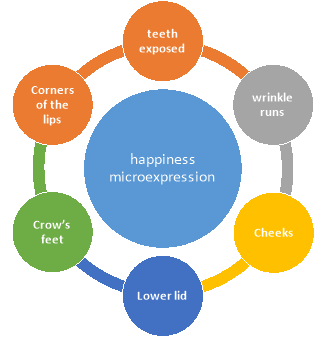
Fig. 2 Factors of happiness microexpression
Methodology
It is important to see that there is big difference of emotional facial expressions according to human age groups. For this reason we decided to apply our idea on a certain group with near or similar ages. The intelligence is this work depends on the ability to understand and identify emotions. According to facial expressions divisions, there are seven or more emotions appear on the human faces as reflected reactions. In our propose approach we will concentrated on the emotional facial expressions according to happiness during classroom. Generally a normal class may be 50 minutes or extended to 90 minutes, so normally you can encourage and motivate your students via exciting them through an interactive recognition of emotional facial expressions. In this case you can highlight the interactive faces each ten minutes through the class.
- Generation of Happiness
Now we try to start in thinking how to excite or generate happiness, this idea involve of the following steps as shown in figure 3:
- Describe happiness: Describing is not talking.
- Define happiness: Defining is not describing.
- Do happiness: Thinking is not doing.
- Build happiness: Doing is not building.
Our aim how to climb to reach the summit, from describing to defining and from defining to doing and from doing to building.
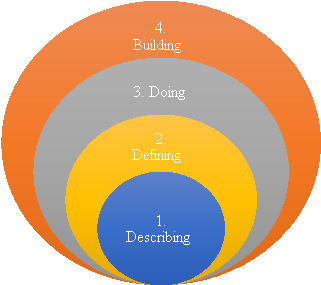
Fig. 3 Steps of happiness
Before the construction of the proposed emotional facial expressions recognition system we divided our measures into color levels in which the color level indicates the darkness or the lightness of the color.
There are three primary paint colors, red, green and blue, and each of these colors are divided into three sub levels. So in our approach there are nine colors to indicate the levels of happiness as shown in figure 4.
Firstly the proposed recognition system detect the student faces and then continually tracking these faces. This approach depends on the feedback interactive cycle in which recognize any interactive action. The rising of happiness including detection, tracking and interaction, so the continues cycling encourage the student to interact and this rising their happiness as indicated on the screen as shown in figure 5.
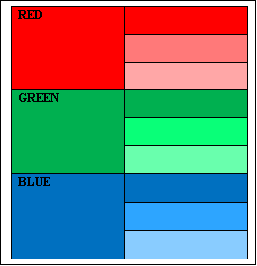

Fig. 4 levels of color divisions of happinessFig. 5 Rising of happiness
- Hardware Aspects
Happiness is an important part of education and it requires the possibility of easy access. The implemented system required the hardware parte in addition to the software part. The hardware part of the system is very simple and it can be implemented easily as shown in figure 6. This part including high resolution digital camera that fixed in front of students, high resolution LCD screen with a special size (about 50″) fixed beside the white board in the classroom, then the processor (you may use any acceptable processor). These devices are connected via two interfaces one for the input and other for the output.

Fig. 6 Hardware elements of the implemented system
- Raspberry Pi B+
The important part of the implemented system is introducing the Raspberry Pi which has the ability to operate in real time. Many generations of Raspberry Pi have been manufactured. The 1G of Raspberry Pi 1 was released in February 2012 (Model A and Model B). The 2G is Raspberry Pi 2 which added more RAM was released in February 2015. Raspberry Pi 3 Model B released in February 2016 is bundled with on-board WiFi and Bluetooth.
The Raspberry Pi is an embedded computer system which was designed in the Laboratory of Cambridge University [31]. These microcomputers are utilized for teaching of information technology at school [32]. The Raspberry pi is integrated from 700 MHZ ARM11 co-processor [33], 512 MB RAM on model B+ whereas 256 MB RAM on model A and Broadcom video core IV [34]. The new scientific field heavily based on Raspberry Pi because the open source operating system is employed in their function such as Raspbin. Raspberry Pi 3 is a microcomputer and it have the ability to work in real time condition that can be manage all the required operations of the implemented system such as detection, capturing, tracking according to the designed algorithm. In addition, it has a flexible platform that help in simulate various applications in our daily life. The architectural design of Raspberry Pi is shown in Figure 7 [34].
The hardware of the implemented system using Raspberry Pi is shown in Figure 8. In this system you have the ability to interact, control and work at real time. Means all operations (including image processing operations) via the implemented algorithm can be run at real time without any mentioned delay.
 Â Â
  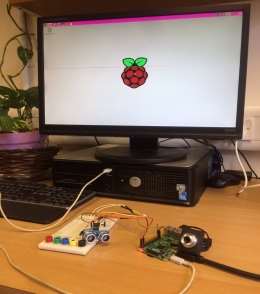
Fig. 7 Raspberry Pi architectureFig. 8 system connection
- Software Algorithm
The software part of the system required the recognition of emotional facial expressions as shown in figure 9, this algorithm is divided into the following steps:
- Face and lips detection: deals with the detection of human face and lips that differ from object that is not a face according to certain criteria.
- Face and lips recognition: deals with the recognizing the detected face and lips and extract their features.
- Face and lips tracking: deals with the tracking by a certain color rectangular on all of the recognized faces and lips.
- Face interaction: deals with the interaction between the face display on the screen and the original human person.
- Happiness measures: deals with the implemented criteria about the happiness in which we divided the measures into levels with the related colors
- Coloring levels: deals with the three colors Red (R), Green (G) and Blue (B) according to their levels.
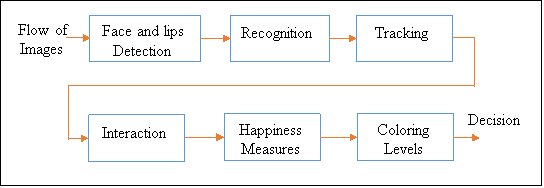
Fig. 9 recognition approach of emotional facial expressions
Results and Analysis
 Many pre-tests are implemented to recognize the happiness value during classroom environment. Finally, it we decided the aspects of faces and emotions to be the main influence and affective factors in this area. These factors can be merged via the teeth exposed. As the level of happiness is divided into three parts low (Blue), middle (Green) and high (Red). During low (Blue) level may most of the student does not care what happens. The most adequate level is the middle (Green) level because in this level the students are middle excited and they can refresh their memory. But for the high (Red) level may students are shouting and disturb the overall lecture so may they are out of control. In order to resize the selected sample from the student’s population so this approach is concentrated on stage four undergraduate students at computer science department as shown in figure 10.
Many pre-tests are implemented to recognize the happiness value during classroom environment. Finally, it we decided the aspects of faces and emotions to be the main influence and affective factors in this area. These factors can be merged via the teeth exposed. As the level of happiness is divided into three parts low (Blue), middle (Green) and high (Red). During low (Blue) level may most of the student does not care what happens. The most adequate level is the middle (Green) level because in this level the students are middle excited and they can refresh their memory. But for the high (Red) level may students are shouting and disturb the overall lecture so may they are out of control. In order to resize the selected sample from the student’s population so this approach is concentrated on stage four undergraduate students at computer science department as shown in figure 10.
Fig. 10 sad students at classroom
Firstly when the camera is concentrated on a certain face then it will be track that face then this face pass into the direct process of happiness. The tracked faces and lips are of sizes 46*46 and 16*31 pixels respectively. Faces and lips of the tracked student pass through steps of measurement to check the value of happiness according to the mentioned criteria. Figure 11 shows tracked faces and lips of students and it is clear that these students at the beginning of the lecture and they are totally sad so the scale is appointed on blue color. These results are obtained from the calculation of many factors in addition to the histogram of the lips.
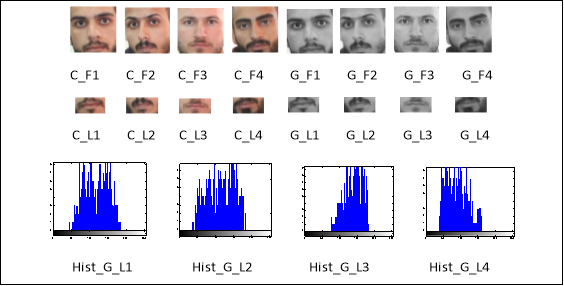

Fig. 11 tracking faces and lips (not happy)
As the system focusing on the monitoring and tracking, smiles of some students appear gradually. In this case the color indicator starts rising and consequently rising the happiness. Figure 12 shows slightly rising of happiness of students and it is clear from their smiles so the scale appointed on green color. It is clear from the histogram that is shifted to the right side means to the high values.
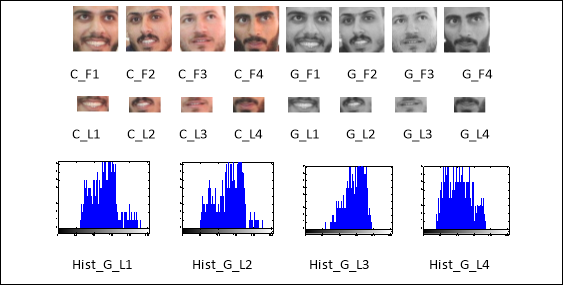

Fig. 12 tracking faces and lips (mid happy)
Figure 13 shows big rising of happiness of students and it is clear from their high smiles. It is clear from the histogram that is shifted more to the right side means to the very high values so the scale appointed on red color. This case may be the students go loudly, so may disturbs the lecture, and it is better to equilibrium and control the classroom.


Fig. 13 tracking faces and lips (full happy)
Conclusions
Classroom is an important part of the real life and there is a direct exclusiveness privacy between students and teacher. It is known that declining students’ attention to the lesson shortly after the beginning of the lesson. So the continuing effective lesson to be pulling students into the lesson, which is a main factor for the success of the educational process. Many techniques, tools and procedure are used in order to attract the attention of students to the lesson and get them to sing and lecture material given. These are all focused on teaching methods and the best use for the lesson and lecture. Students at the classroom, at the beginning of the lecture they give their attention to the teacher and to what is being offered or what is being written on the board. Then after few minutes they are stray and go away to another world. It is therefore essential that to excite them to go back to the lesson and raise the proportion of happiness they have to be able to absorb the lesson. This work try to rise the happiness of students during classroom via applying an interactive image processing technologies with supporting of face detection and tracking approach.
The implemented system including camera, monitor, and the designed face tracking algorithm executed on any processor and in this case we use the Raspberry Pi card. The implemented system try to rise the happiness of students during direct tracking of their faces to enhance the happiness via monitoring the happiness scale at the classroom. The implemented system motivate the students to interact with the displaying screen in order to increase the level of happiness. The implemented system is so fast to process and analysis the microexpression that stay about 40 milliseconds. The color scale transient from blue to green to red depending on the rising of the happiness via the classroom.
References
[1] Lykken, D (1999) Happiness: the nature and nurture of joy and contentment, New York: St Martin’s Press.
[2] Martin, P. (2005) Making Happy People. The nature of happiness and its origins in childhood, London: Fourth Estate.
[3] Argyle, M., & Hills, P. (2000). Religious experiences and their relations with happiness and personality. International Journal for the Psychology of Religion, 10, 157-172.
[4] Francis, L. J., & Katz, Y.-G. (2000). Internal consistency reliability and validity of the Hebrew translation of the Oxford Happiness Inventory. Psychological Reports, 87, 193-196.
[5] Atsunobu Suzuki, Takahiro Hoshino, Kazuo Shigemasu (2010), Happiness is unique: A latent structure of emotion recognition traits revealed by statistical model comparison”, Personality and Individual Differences, 48, 2010, 196-201.
[6] Hills, P., & Argyle, M. (2001a). Happiness, Introversion-extraversion and happy introverts. Personality and Individual Differences, 30, 595-608.
[7] Hills, P. & Argyle, M. (2001b). Emotional stability as a major dimension of happiness. Personality and Individual Differences 31, 1357-1364.
[8] Tugberk Kaya, Huseyin Bicen, “The effects of social media on students behaviors: Facebook as a case study”, Computers in Human Behavior, 59, 2016, pp.374-379.
[9] Jesus Alfonso D. Datu, Ronnel B. King, Jana Patricia M. Valdez (2017), “The academic rewards of socially-oriented happiness: Interdependent happiness promotes academic engagement”, Journal of School Psychology, 61, 2017, 19-31
[10] Peter Hills and Michael Argyle, “The Oxford Happiness Questionnaire: a compact scale for the measurement of psychological well-being”, Personality and Individual Differences 33 (2002) 1073-1082.
[11] Ruth B. Grossman and Helen Tager-Flusberg, “Reading faces for information about words and emotions in adolescents with autism”, Research in Autism Spectrum Disorders 2 (2008) 681-695.
[12] Peter Sheridan Dodds and Christopher M. Danforth, “Measuring the Happiness of Large-Scale Written Expression: Songs, Blogs, and Presidents”, Journal of Happiness Studies, 17 July 2009.
[13] Nader Soleimani; Elaheh Tebyanian (2011), “A study of the relationship between principals’ creativity and degree of environmental happiness in Semnan high schools”, International Conference on Education and Educational Psychology (ICEEPSY 2011)
[14] Vezzetti E. and Marcolin F., “3D human face description: landmarks measures and geometrical features”, image and vision computing, 2012.
[15] Aleix Martinez and Shichuan Du, “A Model of the Perception of Facial Expressions of Emotion by Humans: Research Overview and Perspectives”, Journal of Machine Learning Research 13 (2012) 1589-1608.
[16] Deepak Ghimire and Joonwhoan Lee, “Geometric Feature-Based Facial Expression Recognition in Image Sequences Using Multi-Class Ada Boost and Support Vector Machines”, Sensors 2013, 13, 7714-7734.
[17] María José Rodríguez-Araneda, “Social Representation of Conditions for Happiness and Living Experiences Source of Happiness in Chile and Italy”, Journal of Behavior, Health & Social Issues vol. 5 num. 2 Pp. 47-61 NOV-2013 / APR-2014
[18] Richard G. Booth, “Happiness, stress, a bit of vulgarity, and lots of discursive conversation: A pilot study examining nursing students’ tweets about nursing education posted to Twitter”, Nurse Education Today 35 (2015) 322-327.
[19] Ahmed M. Abdel-Khalek, David Lester, “The association between religiosity, generalized self-efficacy, mental health, and happiness in Arab college students”, Personality and Individual Differences 109 (2017) 12-16.
[20] Lam, S., Law, J., Cheung, R. (2004) The effects of competition on achievement motivation in Chinese classrooms. British Journal of Educational Psychology, June pp. 281-296(16)
[21] Pianta, R.C. (2006) Classroom management and relationships between children and teachers: Implications for research and practice. In C.M. Evertson & C.S. Weinstein, (Eds.) Handbook of classroom management. (pp. 685-709). Mahwah, NJ: Lawrence Erlbaum Associates.
[22] Emmer, E.T., & Gerwels, M.C. (2006) Classroom management in Middle and High school classrooms. In C.M. Evertson & C.S. Weinstein, (Eds.) Handbook of classroom management. (pp. 407-437). Mahwah,NJ: Lawrence Erlbaum Associates.
[23] Ortigosa, A., Martín, J. M., & Carro, R. M. (2014). Sentiment analysis in Facebook and its application to e-learning. Computers in Human Behavior, 31(1), 527e541.
[24] Piers Steel and Deniz S. Ones, “Personality and Happiness: A National-Level Analysis”, Journal of Personality and Social Psychology, 2002, Vol. 83, No. 3, 767-781.
[25] Kendler, K. S., Halberstadt, L. J., Butera, F., Myers, J., Bouchard, T. J., & Ekman, P. (2008). The similarity of facial expressions in response to emotion-inducing films in reared apart twins. Psychological Medicine, 38(10), 1475-1483.
[26] Editorial (2010), “Happiness and capability: Introduction to the symposium”, The Journal of Socio-Economics, 39, 2010, pp. 339-343
[27] Fatemeh Talebzadeh, Mahmoud Samkan, “Happiness for our kids in schools: A conceptual model”, Procedia – Social and Behavioral Sciences 29 (2011) 1462 – 1471
[28] Saeid Atoofi (2013), Classroom has a heart: Teachers and students affective alignment in a Persian heritage language classroom, Linguistics and Education, 24, 2013, pp.215-236
[29] Matsumoto, D., Keltner, D., Shiota, M. N., Frank, M. G., & O’Sullivan, M. (2008). What’s in a face? Facial expressions as signals of discrete emotions. In M. Lewis, J. M. Haviland & L. Feldman Barrett (Eds.), Handbook of emotions (pp. 211-234). New York: Guilford Press.
[30] Peleg, G., Katzir, G., Peleg, O., Kamara, M., Brodsky, L., Hel-Or, H., Nevo, E. (2006). Heriditary family signature of facial expression. Proceedings of the National Academy of Sciences, 103(43), 15921-15926.
[31] J. D. Brock, R. F. Bruce, and M. E. Cameron, “Changing the world with a Raspberry Pi,” J. Comput. Sci. Coll., vol. 29, no. 2, pp. 151-153, Dec. 2013.
[32] P. Abrahamsson, S. Helmer, N. Phaphoom, L. Nicolodi, N. Preda, L. Miori, M. Angriman, J. Rikkila, X. Wang, K. Hamily, and S. Bugoloni, “Affordable and Energy-Efficient Cloud Computing Clusters: The Bolzano Raspberry Pi Cloud Cluster Experiment,” 2013 IEEE 5th Int. Conf. Cloud Comput. Technol. Sci., pp. 170-175, Dec. 2013.
[33] R. Heeks and A. Robinson, “Emerging Markets Ultra-Low- Cost Computing and Developing Countries,” Commun.ACM, vol. 56, no. 8, pp. 22-24, 2013.
[34] E. Upton and G. Halfacree, Raspberry Pi user guide.John Wiley & Sons, 2014.